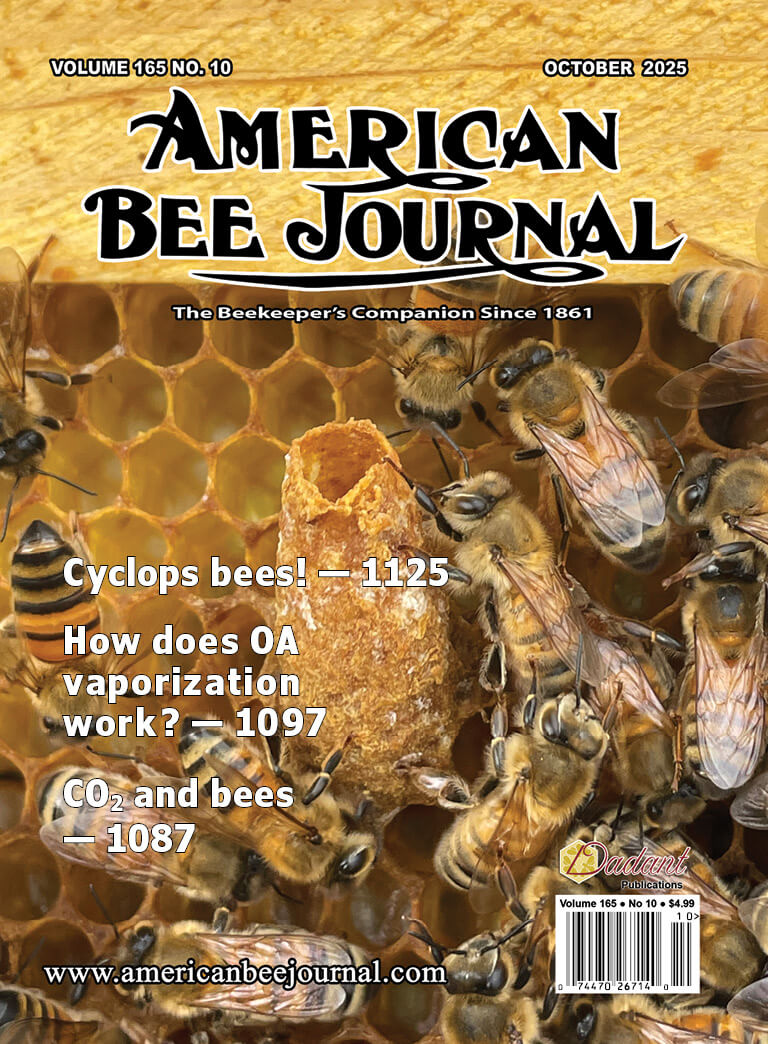Recently I had just two minutes to gather my thoughts after being asked to give a talk about ‘preparing for an apiary visit’ at a training program. There are many days when I work bees, but I rarely think much about ‘preparing’ for the visit since I keep bees near the barn where just about everything I hope I will ever need is stored and can be located with a minimum of searching. This sense of security sometimes shatters when I am teaching or visiting in another location, and need to rely upon what I have in my vehicle, or what is on hand at the host beekeeper’s site. Sometimes what I need is nowhere to be found. To prevent this we all need to have a few containers of items we need in the apiary, the contents will vary by the job at hand.
Minimum needs
Most of us MUST have a minimum list supplies when we are in an out-apiary. My list is this:
1. Smoker, fuel and matches or lighter. I have found more and more beekeepers who never use smokers. Yes, I agree that smokeless colony inspections encourage careful hive manipulation technique, but too often I have seen dangerous situations—to bee and beekeeper—when beekeepers don’t use smoke. The most stings I have ever received have been those times when no smoker was lit! Most of the time I don’t win the argument that I can get into and out of colony before the bees notice. Somehow they know someone was messing in their hive and that I was the person doing it. They reward me with venom therapy.
I argue that the proper use of smoke saves bees, as you can use smoke to move bees from the ends of frames as you work a hive, and reduce the piles of bees in strong hives that develop when hive bodies and supers are taken off the hive and later reassembled when the inspection is complete. Rather than crushing hundreds of bees, a little smoke removes the pile of bees and minimizes their slaughter.
Smoke interferes with bee-to-bee communication and stimulates bees to engorge with honey and become less defensive, and thus less likely or able to sting. When I teach I insist on having a smoker lit that is large enough to produce smoke for 45-60 minutes minimum. My three favorite fuels are white or Southern pines needles, untreated bailing twine, and untreated burlap. A roll of wax paper provides a paper product that will light under most conditions (even when raining), followed by one of the three other materials. I avoid cardboard and other products that produce acrid smoke. I know that I have to breathe this smoke, so some dried herbs provide a nice finish to the smoke. There are folks using gas torches and small electronic devices to light their smokers. It’s great to see these new ideas that simplify smoker lighting and guarantee smoke when you really need it.
2. Veil. I use a headpiece veil all of the time. I didn’t always, but lately the bees seem to see my large, balding head and aim for the eyes. When I get stung around the eyes I do a pretty sad imitation of a puffer fish. So now it is easy on and easy off with the veil. A jacket and veil combo is great when the weather is cool. It also provides extra pockets for queen cages, if needed. (That reminds me that I need to soak my veil in a soap and non-Clorox bleach solution over night to get rid of some staining and spotting. I do like white veils!) Why not keep a spare in case you have someone visit who offers to help lift supers!
3. Hive tool and maybe a spare for your helper.
Yard toolbox or kit
Make up a bucket or tool box to hold a more extensive list of items you may need in the apiary, and will have on hand ‘just in case.’ There are some ‘bucket belts’ sold at home improvement you may want to consider. There are some great tool belts that you could wear around your waist if it doesn’t make your pants ride around you knees.
Here is a list of items that make sense:
- Water-tight container of fuel and matches
- Veil, maybe a spare.
- Hive tools (2) and a small hammer for those well glued hive bodies
- Empty queen cages, with candy or marshmallow, to confine an extra queen (swarm queen, or any ‘extra’ queen you find).
- Marking pen for new queens (yellow in 2012).
- Apiary notebook or clipboard.
- Permanent marker to record data on hive lid or pencil for writing in your notebook (pen ink often fades when it gets wet, which it will).
- Plastic bags for samples for examination at home, or to ship samples of suspected disease to the USDA Beltsville Bee Lab for analysis.
- Bee brush or soft paintbrush to remove bees from comb or queen cells.
- A hive body and super (if different sized) and frames and …


